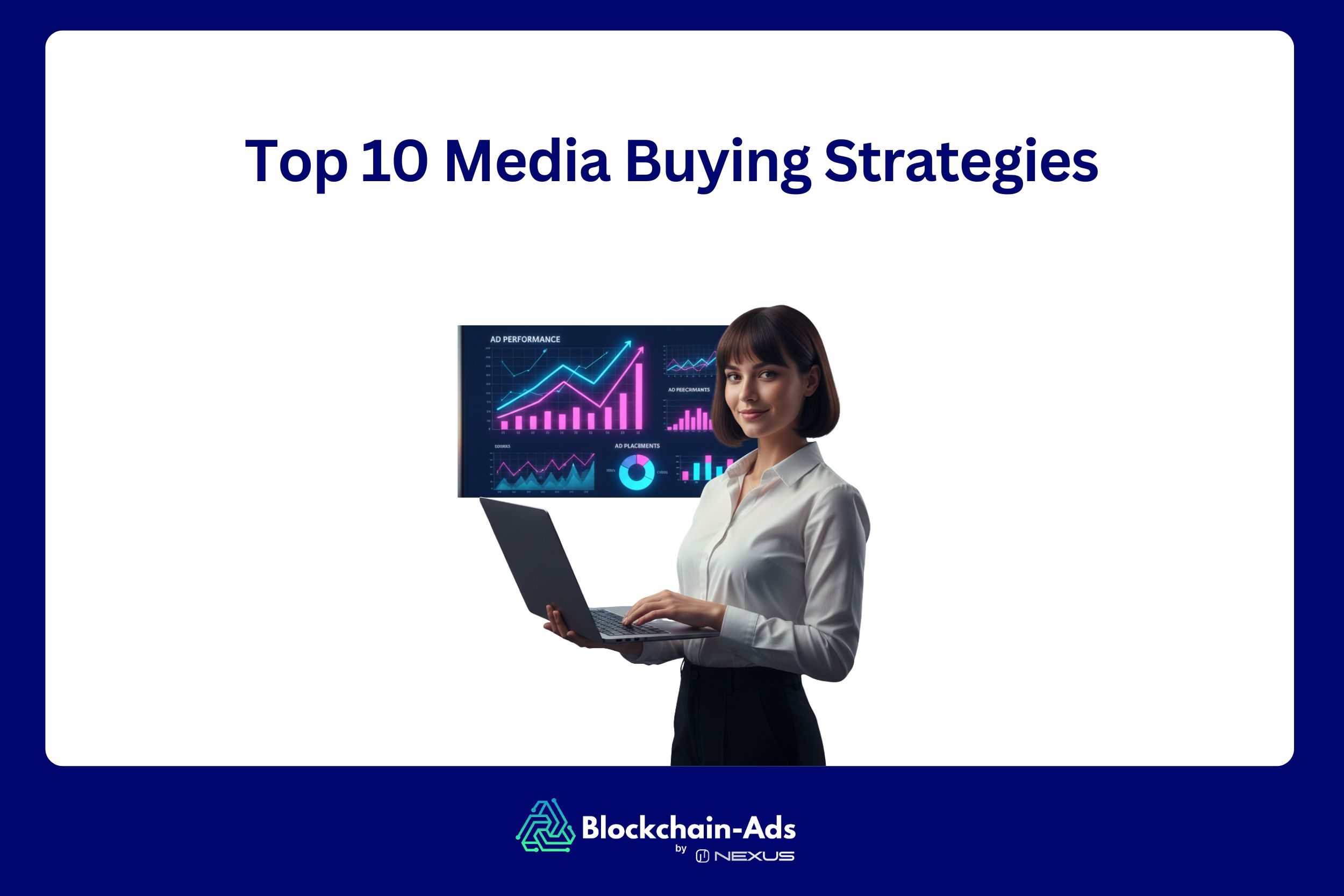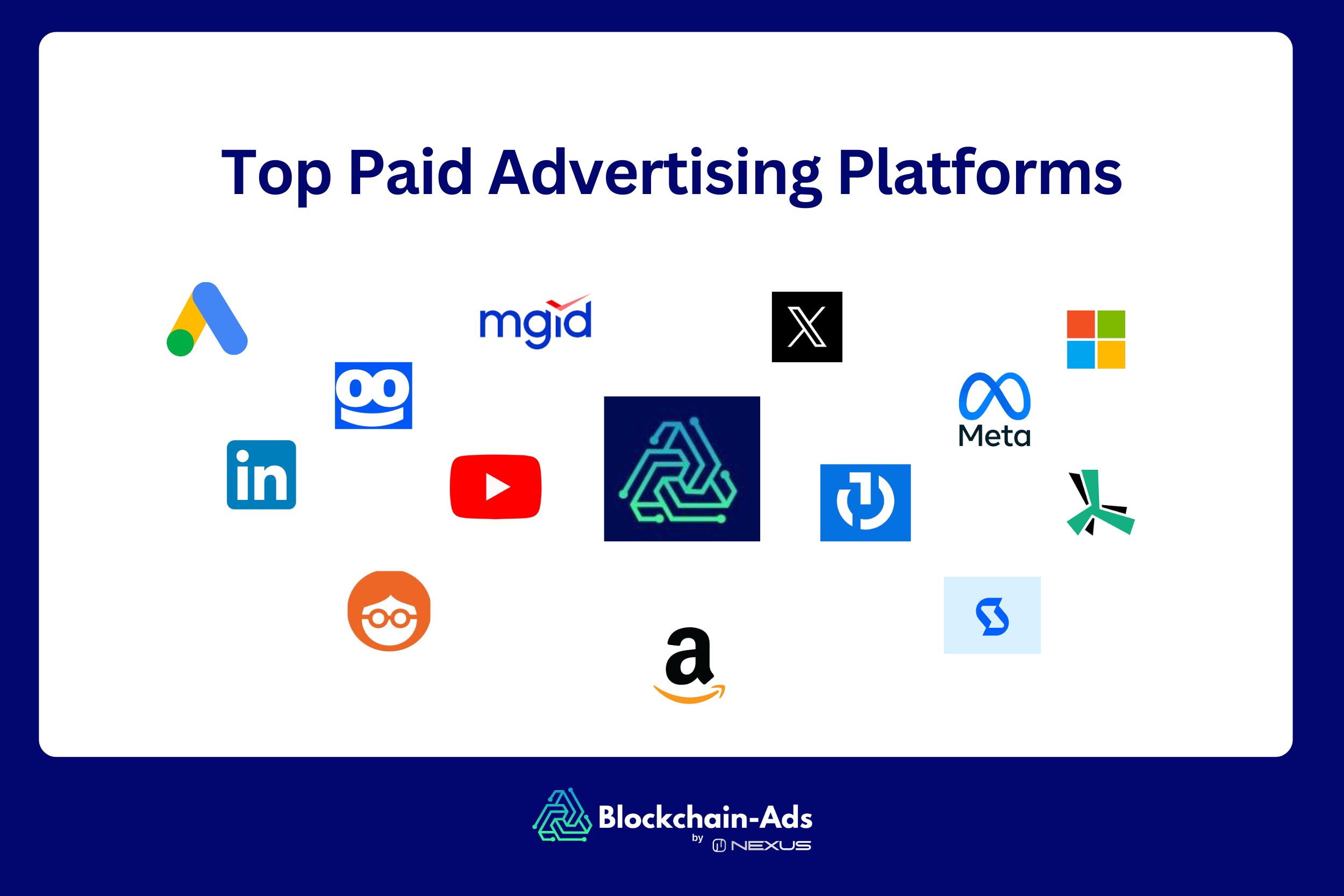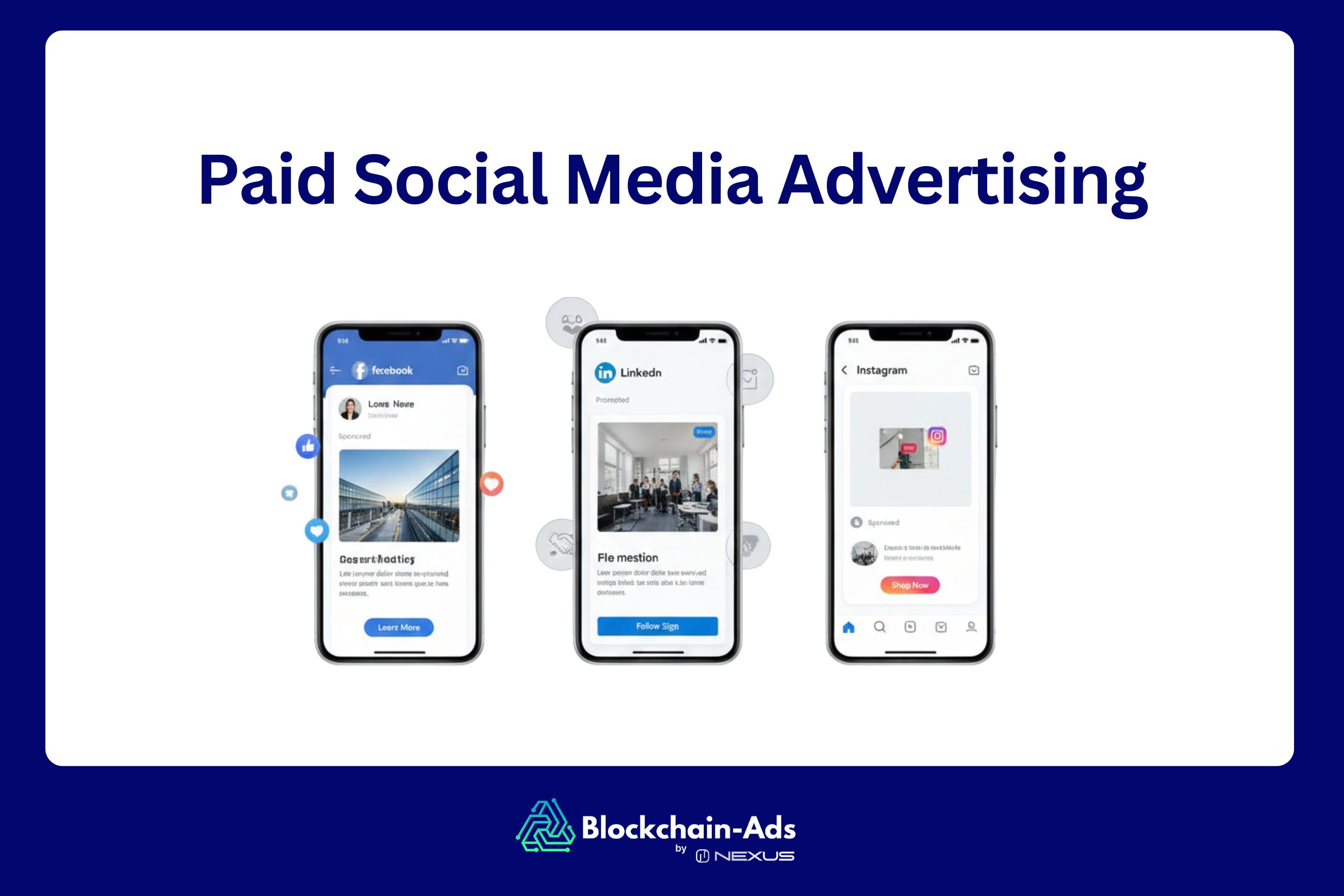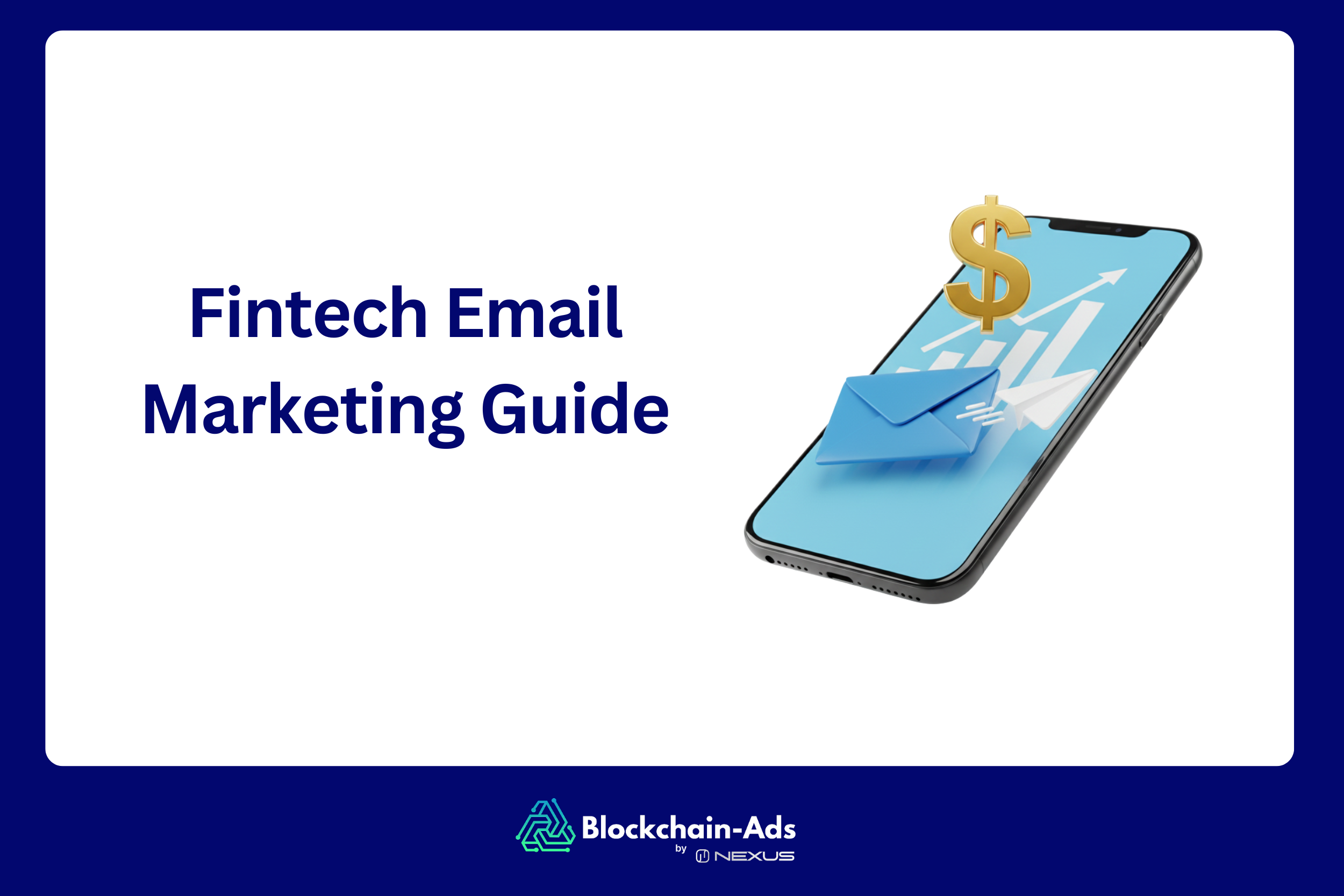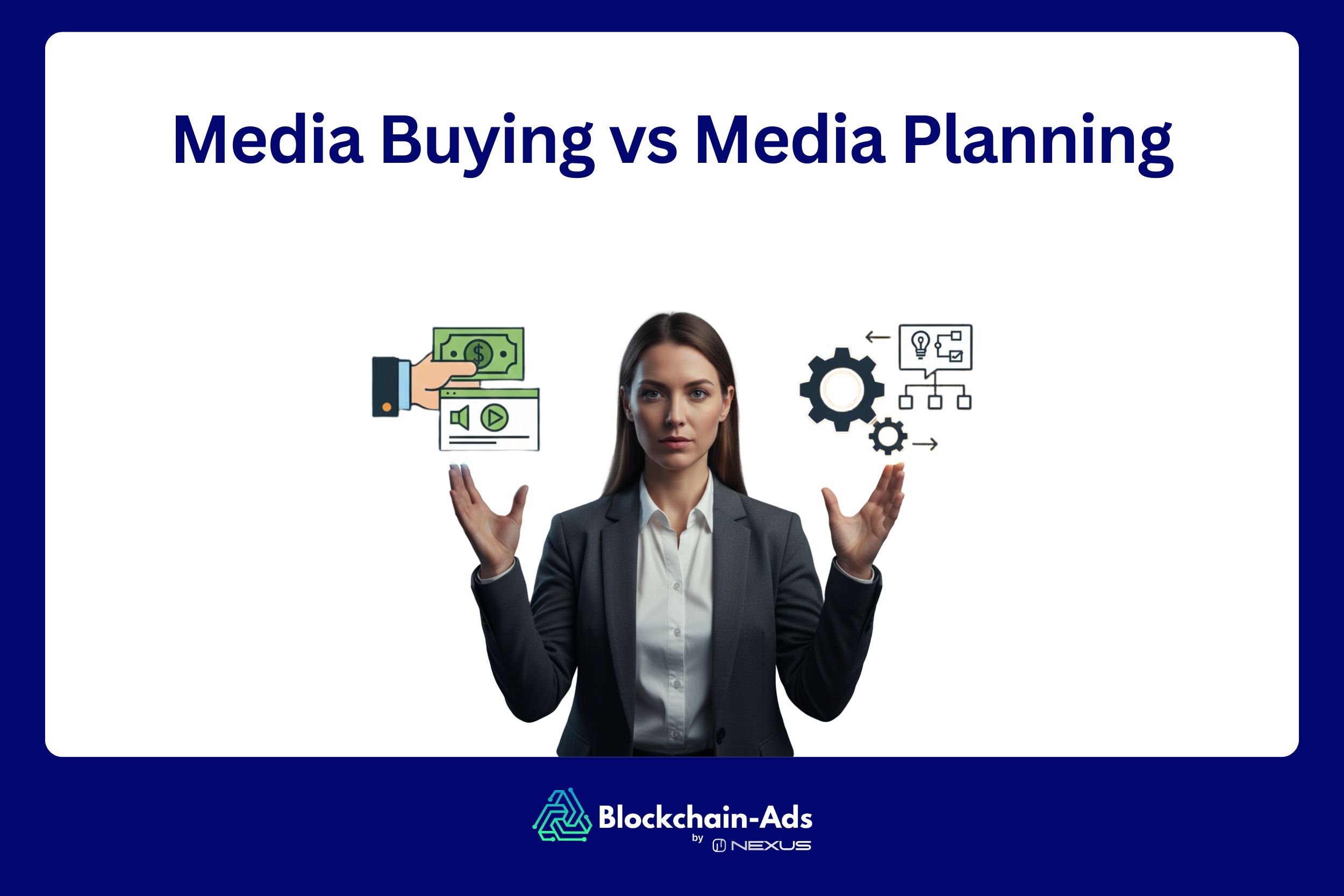Introducción a la Publicidad de Pago [Guía de Medios Pagos]
Encabezamiento
- Cointelegraph Formula ofrece varios formatos de anuncios a 8 millones de lectores mensuales en más de 190 países, aprovechando su nombre de confianza en el mundo de las criptomonedas.
La publicidad de pago, o medios pagos, es popular por una razón simple: funciona. En promedio, los anuncios pagos retornan aproximadamente $2 por cada $1 gastado. Este fuerte retorno explica por qué las marcas siguen aumentando sus presupuestos.
Se proyecta que el gasto global en publicidad digital alcance los $650 mil millones a $730 mil millones este año. Esto marca un aumento del 8% al 11% desde 2024, representando casi dos tercios del gasto global en publicidad.
Los anuncios pagos son excelentes para impulsar ventas, capturar leads y aumentar el conocimiento de marca. Entregan resultados rápidamente y a menudo son más confiables que las estrategias orgánicas.
En este artículo, explicaremos por qué los anuncios pagos proporcionan grandes retornos. También veremos dónde las marcas tienen mejor desempeño y qué tendencias observar en 2025.
¿Qué es la publicidad de pago?
La publicidad de pago, también llamada medios pagos, es una forma para que las marcas paguen por anuncios que lleguen a su audiencia objetivo. Estos anuncios pueden aparecer en motores de búsqueda, redes sociales, sitios web o aplicaciones.
Los anuncios pagos proporcionan a las empresas visibilidad rápida por una tarifa. Esto es diferente de los medios ganados, que incluyen resultados de búsqueda orgánicos y contenido viral.
Los mercadólogos usan canales pagos para controlar dónde aparecen sus mensajes. Dirigen a usuarios específicos y escalan campañas con precisión. Los compradores de medios utilizan plataformas como Google Ads, Meta Ads Manager, Blockchain-Ads DSP para ofertar por espacio publicitario en tiempo real.
Revisemos cómo la publicidad de pago difiere del marketing orgánico, toquemos su historia y por qué los mercadólogos la encuentran beneficiosa.
Beneficios de la Publicidad de Pago
Los beneficios de la publicidad de pago incluyen segmentación precisa, resultados rápidos e impacto medible. Desglosemos esto aún más:
- Visibilidad más rápida: Los sitios web nuevos pueden aparecer frente a clientes potenciales incluso antes de posicionarse orgánicamente.
- Segmentación precisa: Los anuncios pueden llegar a usuarios por ubicación, dispositivo, interés, comportamiento o intención de búsqueda.
- Alcance escalable: Puedes comenzar con un presupuesto pequeño y escalar campañas basándote en resultados.
- Apoyo para otras estrategias de marketing: Los anuncios pagos apuntan a términos de búsqueda competitivos. Mientras tanto, el contenido orgánico continúa expandiéndose.
- Capacidades de retargeting: Las plataformas de publicidad de pago te permiten llegar a usuarios que visitaron tu sitio o interactuaron con campañas pasadas.
- Seguimiento de desempeño: Cada clic, vista y conversión puede ser monitoreado y optimizado en tiempo real.
La publicidad de pago puede acelerar los ciclos de ventas, probar nuevas ofertas y capturar demanda a escala. Funciona aún mejor cuando se combina con marketing orgánico.
5 Tipos de Publicidad de Pago
Existen diferentes tipos de publicidad de pago. Cada tipo apunta a plataformas, objetivos y audiencias específicas. Aquí están los cinco tipos principales de publicidad de pago:
- Anuncios de Búsqueda
- Anuncios Display
- Anuncios de Redes Sociales
- Publicidad Nativa
- Publicidad de Video
Elegir el tipo correcto de medios pagos depende de tus objetivos. ¿Quieres conciencia, conversiones o retargeting?
Aquí está cómo funciona cada tipo y cuándo son más útiles:
1. Anuncios de Búsqueda
Los anuncios de búsqueda son promociones basadas en texto que aparecen en la parte superior o inferior de las páginas de resultados de motores de búsqueda (SERPs). Se activan cuando los usuarios ingresan consultas específicas y están marcados como "Patrocinado" o "Anuncio".
Estos anuncios típicamente muestran un titular clickeable, URL de visualización y descripción corta o enlaces del sitio. Aparecen en motores de búsqueda como Bing, Google, Yahoo y DuckDuckGO.
Aquí está cómo aparecen los anuncios de búsqueda en Google:

2. Anuncios Display
Los anuncios display incluyen imágenes, banners y anuncios interactivos. Puedes encontrarlos en sitios web de terceros y aplicaciones móviles. Estos anuncios a menudo aparecen como banners en barras laterales de blogs, en sitios de noticias, en pop-ups o dentro de interfaces de aplicaciones.
Los anuncios display funcionan en redes como Blockchain-Ads, Google Display Network (GDN), AdRoll y Outbrain. Esto ayuda a los anunciantes a alcanzar usuarios que navegan contenido no relacionado con búsquedas fácilmente.
A continuación hay un ejemplo de un anuncio display:

3. Anuncios de Redes Sociales
Los anuncios de redes sociales son promociones pagadas en plataformas como TikTok, LinkedIn, Instagram, Facebook y Pinterest.
Estos anuncios aparecen de varias maneras. Podrías ver publicaciones con imágenes, publicaciones con video, anuncios carousel, ubicaciones en historias, reels o incluso mensajes patrocinados en bandejas de entrada. Plataformas como Pinterest, Snapchat y X también apoyan formatos de anuncios sociales.
Estas ubicaciones encajan en los feeds de usuarios. Están diseñadas para mejorar el engagement, aumentar conversiones o generar leads.
A continuación hay un ejemplo de anuncios de redes sociales:

4. Anuncios Nativos
Te encuentras con anuncios nativos cuando buscas activamente en un sitio web o aplicación, la mayoría de las veces, ni siquiera sabrás que son anuncios. Estos anuncios pueden aparecer como artículos de blog patrocinados, publicaciones sociales en el feed o recomendaciones de contenido al final de noticias.
Los usuarios también pueden ver anuncios nativos integrados en aplicaciones móviles, motores de búsqueda o bajo artículos en sitios como Forbes o CNN.
Aquí hay un ejemplo de un anuncio nativo:
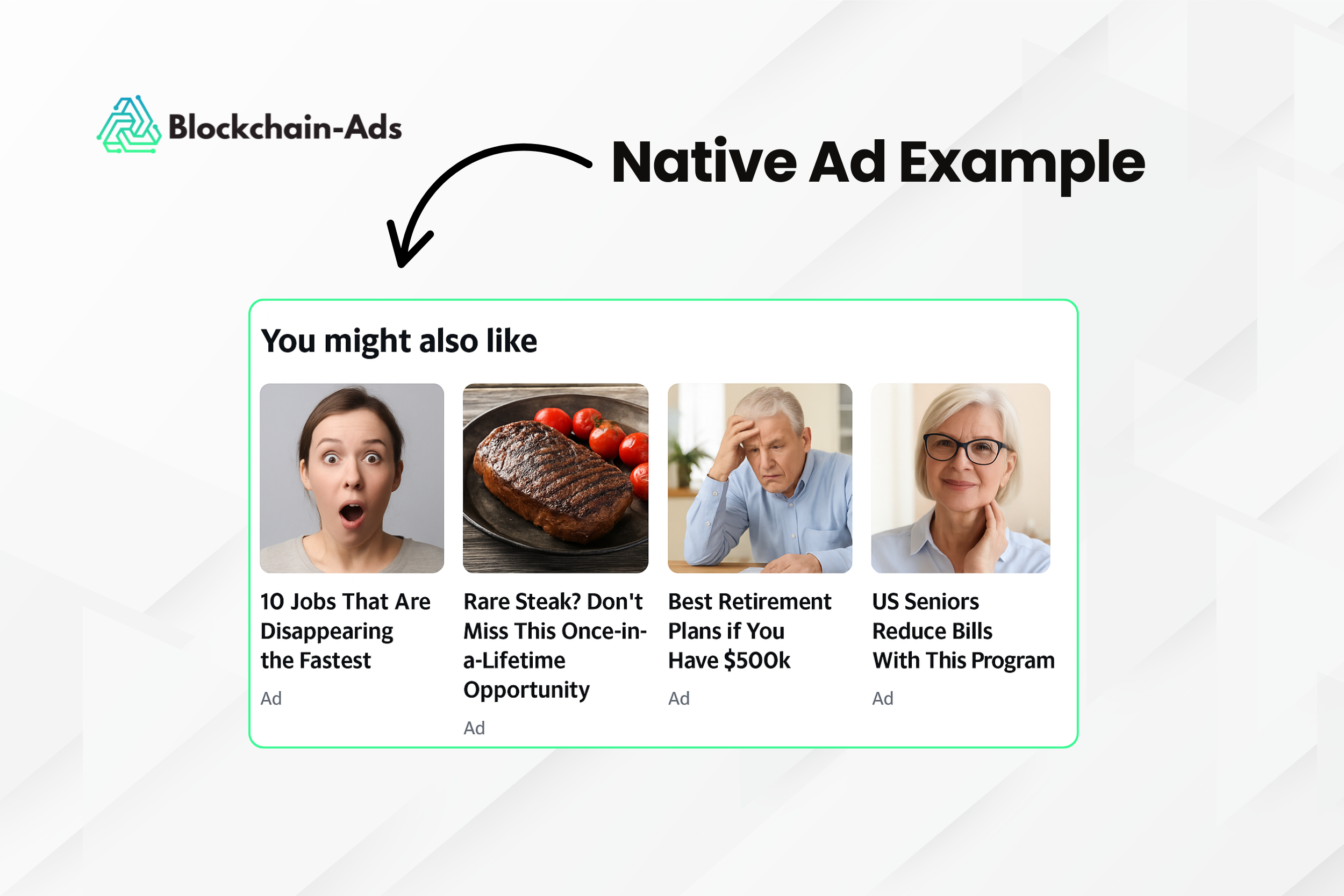
5. Anuncios de Video
Otro método popular de publicidad de pago son los anuncios de video. Los anuncios de video usan videos de formato corto o largo para capturar la atención del espectador y entregar historias de marca.
Estos anuncios aparecen en plataformas como YouTube, TikTok y Facebook Watch. Puedes verlos antes (pre-roll), durante (mid-roll) o después (post-roll) del contenido.
También aparecen en Instagram Reels, Stories y otras ubicaciones en el feed.
Por ejemplo, aquí hay un anuncio de video antes de un video de YouTube:

Creando una Campaña de Publicidad de Pago
Ejecutar anuncios pagos sin una estrategia clara a menudo lleva a gasto desperdiciado, resultados inconsistentes y retorno limitado. Para evitar estas trampas, los mercadólogos necesitan un marco paso a paso que guíe cada decisión, desde la planificación hasta la optimización.
A continuación están seis pasos clave para seguir al construir una campaña de publicidad de pago orientada a resultados:
- Definir objetivos y KPIs.
- Elegir la Plataforma Correcta
- Seleccionar tu formato de anuncio.
- Establecer presupuesto y estrategia de ofertas
- Crear creativos de alta conversión
- Lanzar y monitorear campañas
- Optimizar para ROAS
Paso 1: Definir objetivos y KPIs
Como con cada campaña de marketing digital, debes establecer objetivos claros antes de comenzar la publicidad de pago. Comienza pensando y decidiendo qué debe lograr tu campaña. Por ejemplo, si estás promoviendo una nueva aplicación, tu objetivo podría ser instalaciones. Para un producto B2B, podría ser generación de leads.
Conecta cada objetivo a un KPI específico.
- ¿Conocimiento de marca? Usa impresiones y alcance.
- ¿Conversiones? Rastrea costo por adquisición o retorno de inversión publicitaria.
Objetivos y KPIs claros te ayudan a elegir la plataforma correcta y formato de anuncio. Un objetivo de generación de leads podría adaptarse a LinkedIn, mientras que las instalaciones de aplicaciones podrían funcionar mejor en Blockchain-Ads.
Paso 2: Elegir la Plataforma Correcta
Comienza con donde tu audiencia objetivo pasa tiempo. Para una audiencia de alta intención, elige Blockchain-Ads o Google Ads.
Las campañas B2B funcionan bien en LinkedIn. Para la Generación Z, TikTok y YouTube Shorts pueden funcionar mejor que Meta o LinkedIn. Hay toneladas de plataformas de publicidad de pago con las que puedes comenzar.
Paso 3: Seleccionar tu Formato de Anuncio
A continuación, haz coincidir tu formato con tu mensaje. Usa anuncios de video para storytelling en YouTube o Instagram Reels. Para anuncios estáticos o carousel en Facebook, X o Google Display a menudo funcionan mejor. Blockchain-Ads es una plataforma efectiva para anuncios display, in-app y nativos.
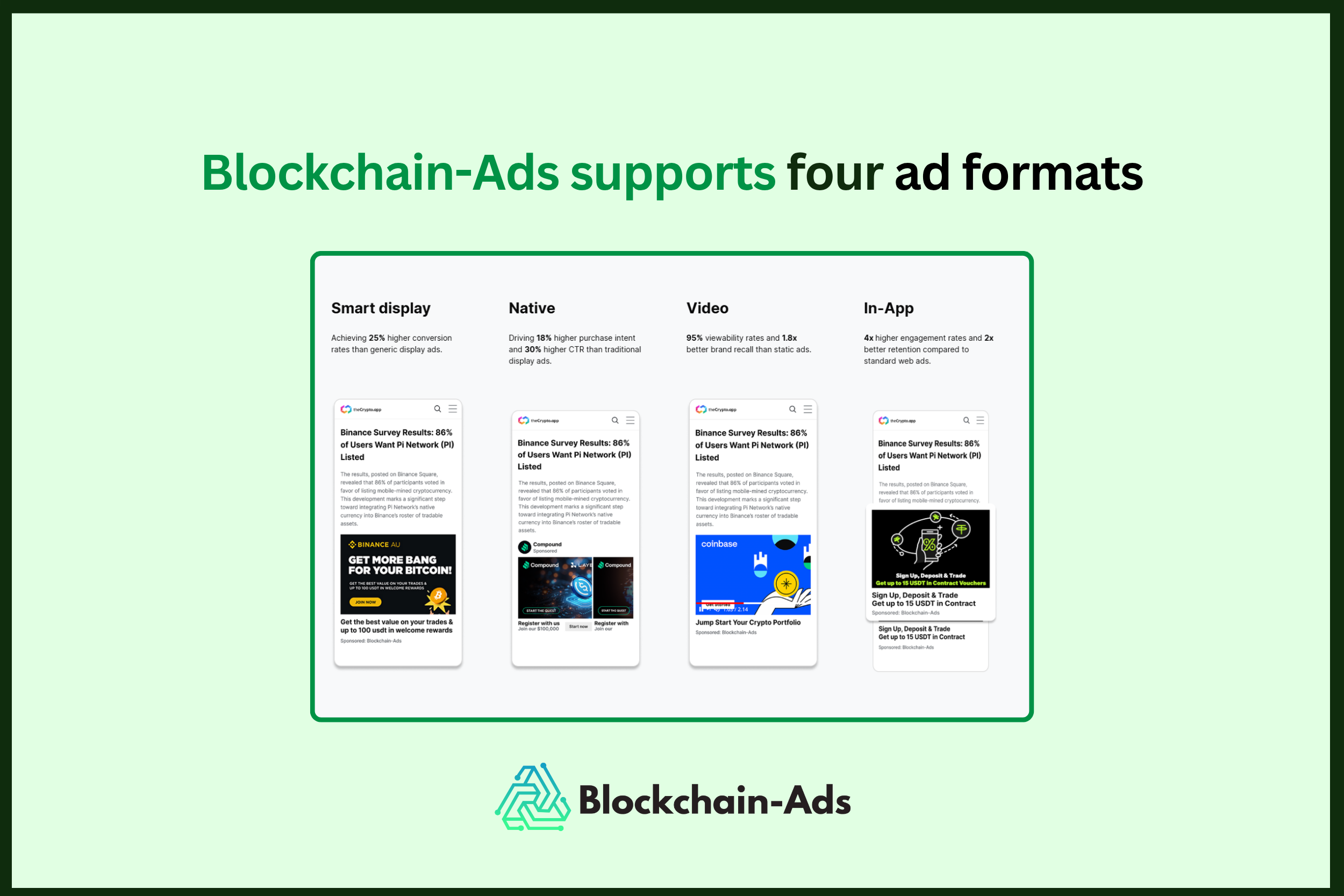
Siempre prueba dos o tres plataformas a la vez. Compara alcance, CPC y ROAS antes de escalar. Una estrategia multicanal funciona bien cuando cada formato impulsa una etapa específica del funnel.
Paso 4: Establecer Presupuesto y Estrategia de Ofertas
Necesitas un presupuesto de prueba diario o mensual que se ajuste a tus objetivos de campaña. Un presupuesto de prueba de $10,000 para Blockchain-Ads puede mostrar qué tan bien funciona en áreas difíciles como crypto y iGaming.
Plataformas como Google Ads ofrecen ofertas manuales y automatizadas. Las ofertas automatizadas son excelentes para generación de leads. En contraste, las ofertas manuales son mejores para campañas que necesitan control preciso.
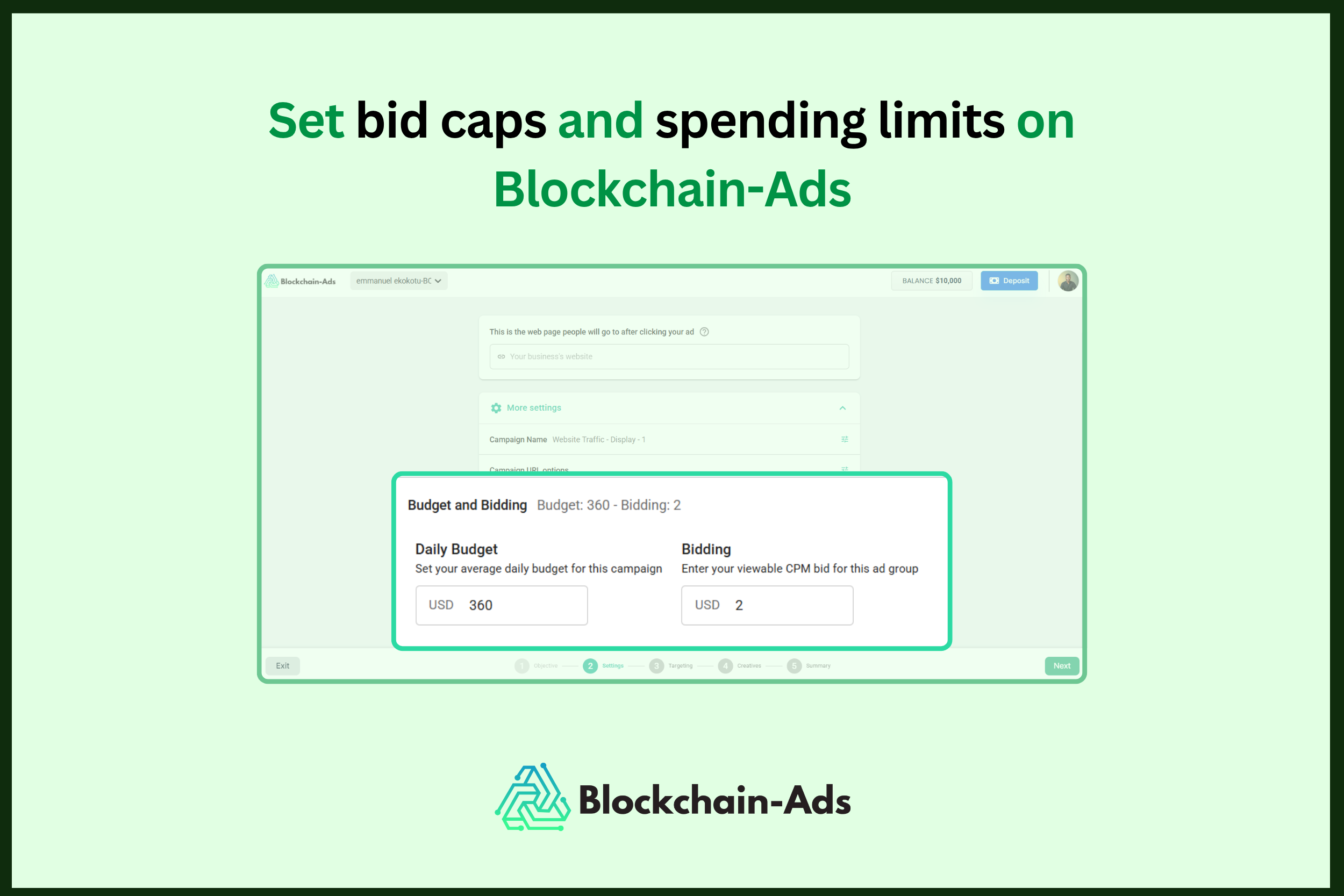
Establecer límites de oferta y límites de gasto ayuda a que tu campaña funcione sin problemas. También previene desperdiciar tu presupuesto.
Paso 5: Crear Creativos de Alta Conversión
Tu creativo publicitario es lo que se nota primero, así que necesita impactar rápidamente. Usa titulares claros, visuales llamativos y una propuesta de valor en los primeros segundos. En Meta Ads, los videos verticales cortos con subtítulos usualmente funcionan mejor que los videos largos.
En Google Display, los carousels de productos y banners dinámicos con etiquetas de precio impulsan las tasas de clics. Blockchain-Ads te permite subir y previsualizar los visuales de tu campaña en segundos.

Prueba variaciones usando herramientas de pruebas A/B, y compara resultados basados en engagement, CTR o conversiones. Elige los formatos que coincidan con los hábitos de tu audiencia y comportamiento de la plataforma.
Paso 6: Lanzar y Monitorear Campañas
Una vez que tus anuncios están en vivo, comienza monitoreando su desempeño diariamente. Usa dashboards de plataformas como Blockchain-Ads analytics, Google Ads o Meta Ads Manager. Te ayudan a rastrear métricas clave como CTR, impresiones, CPC y tasas de conversión.
Por ejemplo, si tu CTR está por debajo del 1%, tu titular o creativo puede necesitar una actualización. Usa pruebas A/B para comparar versiones. Después de 48 horas, pausa anuncios de bajo desempeño y reasigna el presupuesto a los que están entregando resultados. Los datos tempranos te ayudan a ajustar rápidamente antes de que se desperdicie demasiado gasto.
Paso 6: Optimizar para ROAS y Escalar
Por último pero no menos importante, usa datos de desempeño en tiempo real para encontrar qué está impulsando tus retornos. Corta anuncios de bajo desempeño, aumenta ofertas en campañas de alto ROAS y ajusta tu segmentación. Por ejemplo, si tu audiencia lookalike convierte bien, duplica con segmentos similares.
Plataformas como Blockchain-Ads te permiten automatizar el escalado usando reglas basadas en costo por adquisición. De esa manera, creces eficientemente sin gastar de más.
Midiendo el Desempeño de la Publicidad de Pago
Para saber qué está funcionando y qué no, necesitas rastrear cómo se desempeñan tus anuncios. Esta sección desglosa las métricas clave a observar, como alcance, conversiones y retorno de inversión publicitaria. Estas te ayudarán a ajustar tus campañas y obtener mejores resultados.
El desempeño de anuncios pagos típicamente se rastrea usando algunas métricas clave:
- CPC (Costo Por Clic): La cantidad que pagas cada vez que alguien hace clic en tu anuncio.
- CTR (Tasa de Clics): El porcentaje de personas que hacen clic en tu anuncio después de verlo.
- CPM (Costo Por Mil): El costo que pagas por cada 1,000 impresiones (vistas) de tu anuncio.
- CPA (Costo Por Acción): El costo que pagas cuando un usuario completa una acción deseada, como una compra o registro.
- ROAS (Retorno de Inversión Publicitaria): Los ingresos generados por cada dólar gastado en publicidad.
Cada una da una vista clara de costo, engagement o retorno. Rastrearlas regularmente te ayuda a medir el impacto de los anuncios y detectar dónde ajustar para mejores resultados.
Herramientas para Reportes y Análisis
Algunas herramientas populares usadas en publicidad de pago incluyen Google Analytics 4 y Blockchain-Ads Analytics. También puedes conectar tu campaña publicitaria a herramientas de seguimiento de terceros como:
- Appsflyer
- Mixpanel
- Matomo
Estas plataformas recolectan datos de campaña, simplifican reportes y dan insights accionables que te ayudan a rastrear desempeño a través de campañas en tiempo real.
Errores Comunes de Publicidad de Pago a Evitar
Incluso las mejores campañas pueden fracasar si pierdes lo básico. Los anuncios pagos necesitan más que buenos creativos, necesitan precisión, relevancia y actualizaciones constantes. Muchos anunciantes desperdician presupuestos repitiendo los mismos errores evitables.
Aquí están los tres errores más grandes de publicidad de pago a evitar:
- Sobre-segmentación o Sub-segmentación
- Ignorar la Relevancia de la Página de Destino
- Saltarse la Optimización Después del Lanzamiento
Evitar estos problemas temprano establece el escenario para resultados más fuertes, así que entremos en más detalles para mejor entendimiento:
Sobre-segmentación o Sub-segmentación
La sobre-segmentación o sub-segmentación ocurre cuando tu audiencia de anuncios es demasiado específica o demasiado amplia. Por ejemplo, segmentar solo gamers de 25-30 años en Manila puede perder miles de compradores potenciales.
Pero segmentar "Asia" sin filtros puede explotar tu presupuesto en usuarios de bajo interés. La sub-segmentación impulsa altas impresiones pero bajo ROI.
Ambos extremos desperdician gasto publicitario y dañan el desempeño de la campaña.
Ignorar la Relevancia de la Página de Destino
Este error ocurre cuando tu anuncio envía usuarios a una página de destino que no coincide con el mensaje u oferta en la que hicieron clic. Si tu anuncio ofrece un 20% de descuento en zapatos para correr pero enlaza a una página de inicio genérica, los usuarios probablemente se irán inmediatamente.
Esta desconexión frustra a clientes potenciales y aumenta las tasas de rebote. Como resultado, desperdicias gasto publicitario y reduces tus posibilidades de conversión.
Saltarse la Optimización Después del Lanzamiento
La optimización después del lanzamiento se refiere a hacer cambios basados en datos a una campaña una vez que está en vivo. Esto podría involucrar ajustar creativos de anuncios, ajustar segmentación de audiencia o cambiar estrategias de oferta.
Por ejemplo, si una campaña tiene muchas impresiones pero bajas tasas de clics después de una semana, no cambiar visuales pobres podría desperdiciar gasto publicitario. Sin ajustes rutinarios basados en datos de desempeño, tu campaña se estanca o no cumple.
¿Vale la Pena la Publicidad de Pago?
La publicidad de pago es una estrategia digital efectiva que ofrece retornos rápidos y medibles. Las estadísticas revelan que el gasto global en publicidad alcanzará $1.16 billones en 2025. Esto muestra que las empresas están adoptando el modelo para impulsar su visibilidad y ventas.
La publicidad de pago es valiosa. Las empresas típicamente ganan aproximadamente $2 por cada $1 gastado en pago por clic. Los anuncios pagos también generan tráfico más rápido comparado con SEO.
Plataformas como Blockchain-Ads, Facebook Ads y Google Ads reportan alto ROI entre canales pagos. Usar campañas de anuncios pagos bien optimizadas y segmentadas puede ser un impulsor poderoso para el crecimiento. Como tal, puedes usarlas para lograr resultados rápidos y escalables.
Califique y obtenga acceso a Anuncios de cadena de bloques
Lorem ipsum dolor sit amet, consectetur
Definición rápida

Hable con algunos de nuestros socios actuales
Ver todos los casos de éxito

Alcanza más de 12 millones
Interactuó con usuarios de Web3 en más de 10 000 sitios web y 37 cadenas de bloques.






.png)
.avif)

